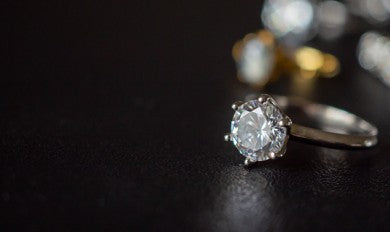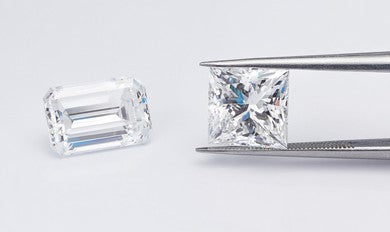
Conflict Free Diamonds
Conflict free – Diamonds from a good place
It is of vital importance for BRILANI to be able to tell you that your diamonds come from a good place. A place where working conditions are decent and efforts respected, a place free of conflict and violence, where human rights are not constantly stepped on. We hold the ethics of diamond trade in the highest regard and are strong supporters of a rigid ‘diamond tracking system’ that will reveal a diamond’s origin and is fully transparent from start to finish.
The term “conflict diamonds” is given to diamonds that have a disputed ownership. In other words, “conflict diamonds” are mined different areas of Africa and are in the hands of rebellious or underground organizations. These diamonds are used to finance these organizations whose purpose is to overthrow the legitimate government. These organizations exploit their country’s natural treasures for their purposes, offending the elementary human rights of the citizens in their own countries. Because of the exploitative nature of conflict diamonds’ use, they are also called “blood diamonds”. These diamonds are used to purchase weapons and other means of warfare, hurting human life. In the category of conflict diamonds we find diamonds of Angolan origin, in possession of the rebellious Unita organization. Also in this category are diamonds from Sierra-Leone, Liberia and the Democratic Republic of Congo. The issue of conflict diamonds has been a very hot topic worldwide, it has even been presented and discussed in the UN and debated between many parties who share different interests in this matter. The Americans suggested prohibiting the entry of these diamonds to the US, since the US market represents 70% of the global diamond trading market and the consciousness are worldly substantial. An important fact is that only 3% to 4% of gem quality diamonds produced in the world are considered as conflict diamonds. Furthermore, in some countries, especially of the African continent, the entire economy is based on the financial gains from sales of diamonds.
Therefore, governmental and non-governmental organizations assembled to discuss and take a decision about the issue. The main idea was to invest the required efforts to end the use of diamonds as a currency to finance of civil wars and power struggles. The first thing we must be able to do is to identify and separate diamonds by country of origin both rough and polished diamonds. This is not a simple matter and presents a serious challenge for everyone in the diamonds trade. Rough diamonds that emerge from the earth’s crust, hosted by the kimberlite and the lamaforite rocks, have geological signs that could help to identify their primary country of origin and the processes that they had been exposed to. Some of the diamonds are eroded and found in secondary deposits. Some of the original features are erased or have disappeared with erosion. Furthermore, alluvial diamonds – eroded diamonds are not mined in their area of origin. In spite of the fact that a diamond has all the features of a certain origin, it is not sure that it has been mined in the same country where it has been primarily erupted, and a mistake could occur in identifying a conflict diamond.
Diamonds identification is becoming more and more complex with diamonds progress in the levels of the market.
Even if diamonds from different origins have optical gemological features or chemical components that might help to identify the country of origin, in addition to this there is a need of a database compiled for the classification of the different origins (countries, mines and deposits). Such a database will include items of quality, size and various shapes. There is a problem to establish such a database, because access to some mines or different origins is very limited.
Even though a few researches have carried out studies on determination of origin through the specific features of diamonds (for example – UV fluorescence), the results have never been published. Furthermore, to identify chemical components or the presence of trace elements we must use very costly, expensive and sophisticated equipment that could probably damage the diamond. Because of changes and disturbances in the formation process, examination and investigation of one part of the diamond would not assure that the same result would be acceptable in another part of the stone.
The diamond industry uses immense quantities of diamonds every year and it is impossible to investigate their origin because of they are small in size or poor in quality. One of the options subjected to discussion is to investigate only diamonds of a predetermined carat size (1carat weight for example). Until today, scientists have not yet discovered a scientific method to determine the country of origin in polished diamonds.
Therefore great efforts and investments are directed towards the creation of a system, which would update and accompany the different diamonds from the selling of a rough diamond in its country of origin in agreement with suitable institutes in countries discussed previously that do face this problem. The World Diamond Congress (WDC) in collaboration with other organizations involved with diamond and jewelry and also different countries have all taken steps aimed at forming an independent organization. This organization would decide about the mechanism of diamonds documentation and country of origin determination with a tracing possibility. All organizations that deal in diamonds fear that diamonds would be stained and that the entire diamond trade would take a blow, as happened to the fur industry. In the beginning of the fifties a similar situation occurred and environmental organizations and animal lovers spared no means in their fight against the fur industry.





